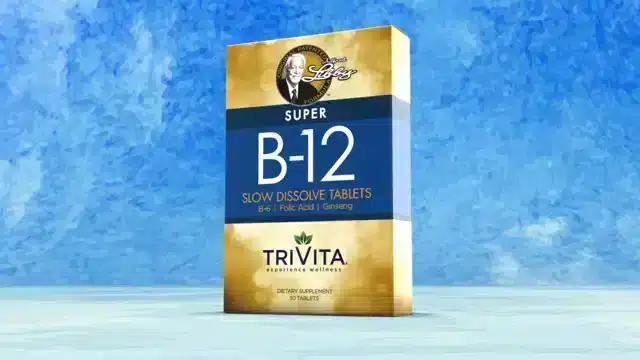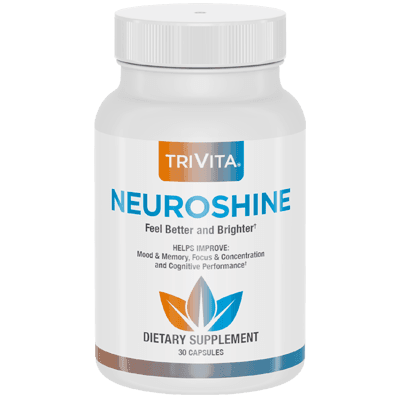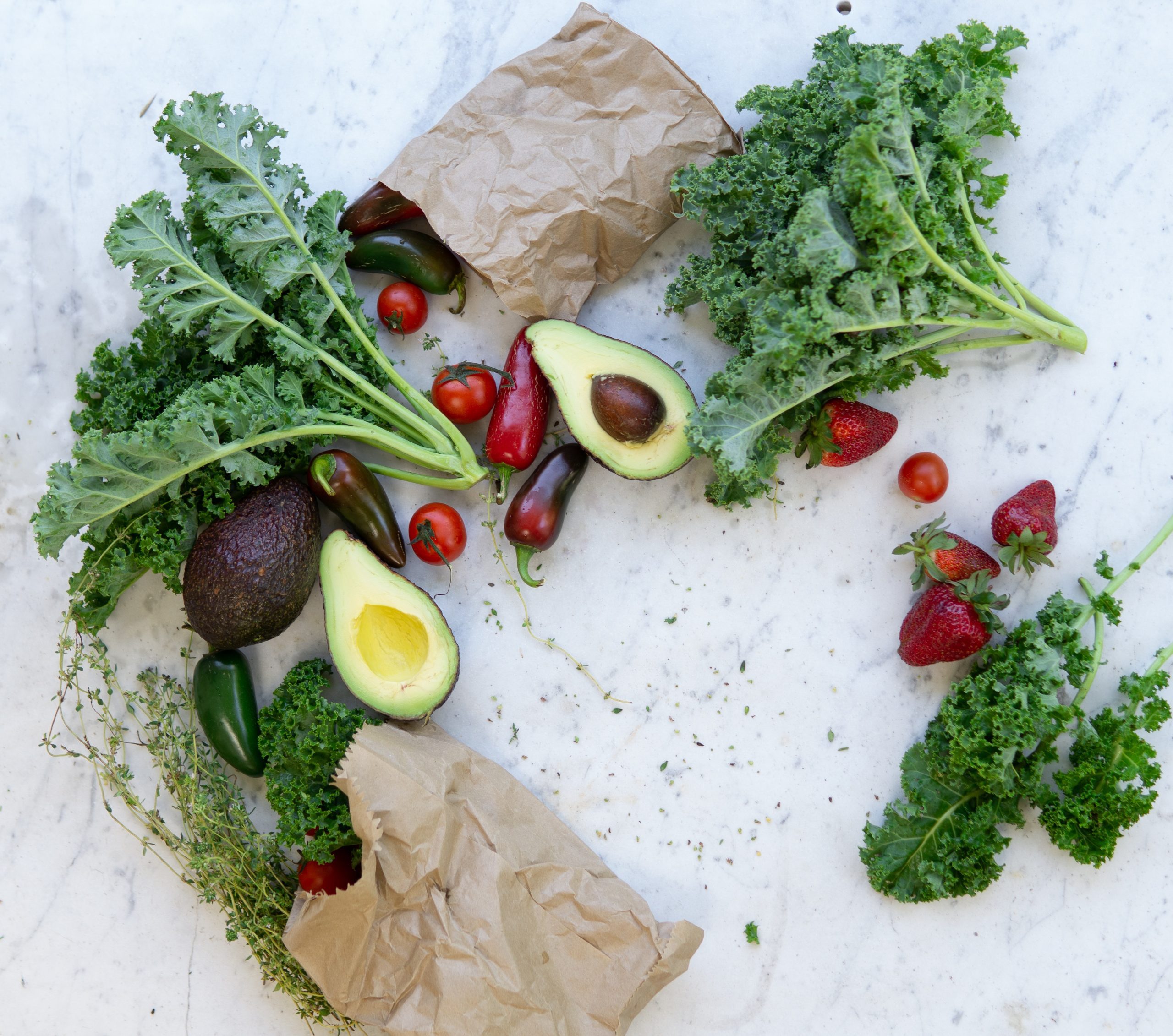Your cart is currently empty!
Category: Health and Wellness
-

Secrets to Extending Your Quality of Life
One of the fascinating studies I did recently was on extending quality of life. I decided to research centenarians and get their advice. Anyone who is living past 100 and can get in front of a camera to describe how to live life with enjoyment and health is worth listening to. As one lady who is 103 years old described it, “People think money is what makes you happy….oh no, it is attitude. Keep your attitude up, up, up!! ”
By the way she described her life she must have found the TriVita Essentials at an early age! Attitude with gratitude is probably some of the best advice I received in my research. Here are 5 great tips for extending quality of life to embrace at any age.
-
- Have a purpose in life that is interesting, enjoyable and engages people and your mind! This is common amongst many of those who live long lives that are still full of zest and vibrancy even past 100. Today, leading healthcare physicians are encouraging people to embrace purpose for their lives to live with greater wellness and quality of life.
- Stay positive in the bad times and good times. Yes, keep your attitude up, up, up! Life gives us opportunities to respond or react. If we react to avoid failure rather than to enjoy success, your life will be lived trying to avoid failure and the real potential of your talents, gifts and purpose will be diminished. As one centenarian said, “Even the five years of World War, it was an adventure even amongst the bombs!” Positivity will add life to your years and years to your life!
- Keep physically active was a common theme throughout their lives. Find ways to enjoy physical activity from yoga, golfing, walking, hiking, swimming, tennis, dancing, gardening and the list goes on. Many people don’t like the idea of exercising as it denotes as not being fun. Find activities you enjoy that keep you moving!
- Remain socially engaged as frequently as possible. Most centenarians loved people all through life and being with people is a must for them. Don’t shut yourself off from people, love people! Even in an age of technology many people today are lonely. In fact, Harvard Medical recently reported that loneliness is the number one health risk now in corporate America! Friends on Facebook will not substitute for real friends in communities of worship, activities, volunteer work and most valued are the family members! Find a reason to engage socially at any age.
- Develop a relationship with God and His creation. I personally enjoyed the added dimension from the centenarians’ perspective of developing a relationship with God going beyond meditation and prayer which was in His creation. I have always loved the outdoors since I was a very young boy. Today that love is expressed even as I see a flower, I will see God in it; when I look at the beauty in a butterfly, I will see God in it. The rivers, meadows and mountains are all ways of reminding me of the wonderful Creator and His love for me. Look for new ways to engage in your relationship with God!
At TriVita, we are always searching for new insight for quality of life. Wellness and purpose go together like hand and glove. Our purpose is to help you experience greater wellness!
-
-

A New Mindset for Aging Well
I am sure all of us experienced a time in our lives when our attitude was really an anti-attitude towards the effects of aging. Not aging itself, as the only alternative to aging is dying. It reminds me of the Kenny Chesney song, “everybody wants to go to heaven, but nobody wants to go now.”
My wife and I wanted to defy the effects of aging and with a pretty intense reaction to the reminders of aging. When my wife got her AARP card in the mail reminding her that she just turned 50 years old and all the benefits of membership, she had a defiant card burning ceremony! Now we smile when we look in the mirror or get those reminders in the mail of our age and realize, we are not anti-agers; we are healthy-agers embracing aging but with goals of extending our quality of life! We and millions of others have entered a healthier mindset of the aging process!
Today there are over 108 million people in the USA that are 50 years of age or older. The 65 years of age population explosion is expected to grow from 50.8 million as of 2018 to 70.4 million people in just twelve years. It is this group that is motivating our desire for a healthier way to age.
The National Council of Aging (NCOA) reported that 80% of adults aged 65 and older have at least one chronic condition; 68% have two or more according to 2015 data from the Centers for Medicare and Medicaid Services. I will not list the conditions but make note that the majority of the conditions are as a result of lifestyle choices! This is excellent news because, as I have said before, if lifestyle choices can make us ill, they can make us well.
With a mindset of healthy aging now at the center of so many people’s thoughts, there are shared values that are very important like independence, freedom and a healthy mind. Autonomy and freedom translate to a lifestyle that maintains mobility and self-reliance. Healthy aging is not so much about longevity but really about extending quality of life. As I have always said, a long life in diapers without the ability to respond to purpose in life is not my idea of a life worth living. It is inevitable we will all age but how we age has a lot to do with the choices we make today.
This is why at TriVita we are moving towards helping our Members understand how best to support their body systems and organs so they can make informed choices for healthy aging and the quality of life that goes with it. We have hero products with additional companion products so our members can make the decisions right for them in supporting their health goals.

Maintaining mobility throughout the aging process strengthens independence and self–reliance, and the musculoskeletal system needs proper nutrients and nurturing activities to remain strong at any age. MyoHealth is a powerful muscle and bone building formula with the nine essential amino acids developed by Dr. Robert Wolfe with over 20 million dollars of National Institute of Health and other institutional funding and with 25 human studies. Now the healthy-agers do not have to accept the accelerated muscle atrophy that causes so much human despair.
Another example of healthy aging is supporting good brain health. Until recently, the attitude about brain health was you either had a good memory, focus and function or you didn’t. A healthy brain has always been separated from lifestyle choices. But now thanks to research and especially Dale Bredesen MD, and other leading medical researchers, we know that diet, physical and mental activity along with targeted nutrition can help support a healthy brain. This is inspiring news for those of us who want to have extended quality of life. It is also why we developed NeuroShine for a better and brighter mind!
Today the healthy aging movement is looking beyond the wrinkles, the thickness of hair, and waistline, to see the whole-person wellness opportunity living with quality of life through the aging process. As I like to say, wellness is having the vitality and energy to do the things you love and need to do; having daily positive emotions of love, forgiveness, gratitude and acceptance; and developing a relationship with God knowing His purpose for your life.
Healthy aging is possible through proper lifestyle choices, and is most appealing when we look at it through the lens of whole-person wellness!
-

Exercise for Energy: Fight Fatigue and Pump Up Your Health
Energy boosting workouts that anyone can do, anytime!
You might be surprised to learn that one of the best antidotes for fatigue is to exercise more, not less! Experts say, when it comes to fighting fatigue, just getting up and walking around will increase energy. But all exercise isn’t not created equal. A study published in a 2008 issue of Psychotherapy and Psychosomatics, University of Georgia researchers found that inactive individuals who routinely complained of fatigue could increase energy by 20% while decreasing fatigue by as much as 65% simply by participating in regular, low-intensity exercise.1 Varying levels of intensity will yield different effects on your energy levels. For example, high-intensity exercise might consist of heavy weight lifting, 45 minutes on the treadmill, etc., while a 15-minute walk would be considered moderate exercise. The intensity of your workout will affect your energy levels. “A lot of times when people are fatigued, the last thing they want to do is exercise,” says researcher Patrick O’Connor, PhD.” But if you’re physically inactive and fatigued, being just a bit more active will help.” When exercising for energy, behavioral therapist and personal trainer Therese Pasqualoni, PhD, says, “You should always aim to exercise in your low to moderate training heart rate range. This will prevent you from depleting your body, and help you avoid feeling fatigued, which would otherwise prevent you from getting the maximum energy benefits.” Before you begin, it’s important to understand your body and be realistic about potential limitations to avoid injury. What’s moderate for some may be too intense for others. Walking is generally a well-tolerated option for most individuals. In addition to walking, other forms of low-impact exercise that help increase energy are yoga, Pilates, swimming and Tai Chi.Need All-Day Energy?
Regardless of your activity level, you can naturally increase your energy and improve performance by drinking water. Dehydration is a common cause of fatigue, so it’s important to stay adequately hydrated. This is especially important if you are incorporating exercise into your day. Always drink pure water before, during and after working out to help decrease workout-related fatigue. If you need energy now, you can turn to certain dietary supplements for a boost. Always look for supplements that support natural energy processes, and skip artificial energy drink and sugar-laden power bars.
References: 1. https://www.karger.com/Article/Abstract/116610 -

New Wellness Poster Boy and Girl for TriVita!
I thought I was the poster boy of TriVita, but I step down (temporarily) to Harry at age 93 along with his wife Marvis at age 92. They are the new TriVita wellness poster boy and girl living with wellness!!
It is always a highlight of any day to receive a wellness testimony from a TriVita member like the one from Harry and Marvis. This is the experience we live for every day; the joy of wellness in our lives and the lives of our members!
Living with the abundance expressed through the Essentials for Health and Wellness jumps off of the page of their letter. Read their inspiring story of a life lived with freedom, independence and wellness!
This is our wellness story to inspire others to use your vitamins.
We have trusted TriVita since 2001. Harry and I are on no medications. Harry will be 94, October 15th and I am 92, as of April 1st this year.
We were featured on the front page of the TriVita magazine with our story inside along with pictures a while back.
We do TV commercials and modeling. We ran big yachts and ferried airplanes and now big RVs all over the USA.
We have been everywhere in our own RV, including Alaska. Our map on the outside of our motorhome is full.
Last summer, we left for Seattle to see our grandchildren in June, drove over 11,000 miles, stopping to see friends and family along the way, and didn’t return home until December 6th. It was a wonderful trip.
We dance a lot and enjoy life. I’m sure we wouldn’t be able to do all those things, if it wasn’t for taking TriVita all these years.
Thank you for our healthy life!
Harry and Marvis Long

Gratitude is an attitude that enhances wellness. I think this letter exudes gratitude, and I am grateful to Harry and Marvis for sharing their life, journey and wellness experiences to inspire all of us to the possibilities of greater wellness at any age. I believe in the awesome design of our body by our CREATOR when given the right nutrients and nurturing; it has the healing power within to enhance our wellness.
If you have wellness goals, call TriVita CARE at 1-800-991-7116 and share your goals and we will share our best steps towards helping accomplish those goals.
If you have a wellness story you would like for me to share to inspire others, write me at CEO@Trivita.com.
Pursue wellness with passion!!
-

The CoQ-10 and Statin Connection
Cholesterol-lowering medications can deplete your body of this vital nutrient If you are like one of the millions of people taking a statin drug, there’s some important information you should know: Statins are known to reduce levels of CoEnzyme Q-10 (CoQ-10), a nutrient that helps fuel your entire body. CoEnzyme Q-10 is a fat-soluble, vitamin-like substance found throughout the body with the highest concentrations in the heart, liver, kidneys and pancreas. At its most basic level, CoQ-10 keeps you healthy, active and alive. CoEnzyme Q-10 is required for mitochondrial adenosine triphosphate (ATP) synthesis and functions as an antioxidant. Most of the cellular functions performed by your body are dependent on adequate ATP, the form of energy used by cells.1 As you age, tissue levels of CoEnzyme Q-10 decline, this is exacerbated by the use of certain medications including cholesterol-lowering statins.2 Without enough of this energy-producing coenzyme, your body systems may struggle to perform its role of balancing electrons, producing energy and fighting off free radicals.3Can CoEnzymeQ-10 Offset Statin Side Effects?
One of the most common side effects of statins is muscle pain and cramping, known as myalgias, or muscle-related symptoms. The pain may be a mild soreness, weakness or tiredness in your muscles. Studies have shown that up to 29% of people that start taking statins report muscle pain and consider discontinuing treatment with the drug.4 Muscle soreness or weakness can seriously affect your mobility, stability and overall quality of life. CoQ10 can help alleviate muscle pain and joint pain brought on by statin use, according to a study published in the American Journal of Cardiology. The study found, “Coenzyme Q10 supplementation may decrease muscle pain associated with statin treatment. Thus, coenzyme Q10 supplementation may offer an alternative to stopping treatment with these vital drugs.”5It Makes Sense to Supplement with CoEnzymeQ-10
CoQ-10 nourishes your heart and brain and provides energy to your entire body. There’s also the added benefit of its antioxidant properties that help prevent free radical from damaging your tissues. This coenzyme is vital to your overall health and performance. If you are taking a statin drug or are over 50 years of age, it makes sense to supplement your diet with CoEnzyme Q-10. Talk to your healthcare provider to find out if you are a good candidate for CoEnzyme Q-10 supplementation. Your continued quality of life may depend on it!
References: 1. http://lpi.oregonstate.edu/mic/dietary-factors/coenzyme-Q10 2. https://www.ncbi.nlm.nih.gov/pubmed/17560286 3. https://www.omicsonline.org/open-access/the-role-of-coenzyme-q10-supplementation-with-statin-drug-use-and-chronicdiseases-2329-8731-1000157.php?aid=86554 4. https://www.mayoclinic.org/diseases-conditions/high-blood-cholesterol/in-depth/statin-side-effects/art-20046013 5. https://www.ajconline.org/article/S0002-9149(07)00255-X/fulltext -

Is a Gluten-Free Diet Putting You at Risk for a Vitamin B-12 Deficiency?
Prevent critical nutrient deficiencies when eating gluten-free
Researchers have long known that a strict vegetarian/vegan diet can lead to Vitamin B-12 deficiency, but vegetarians and vegans aren’t the only ones at risk. Individuals following a gluten-free diet may be susceptible to key nutrient deficiencies as well. In 2013, a study assessed the nutritional status of “early diagnosed” untreated adults with celiac disease (CD) in the Netherlands. The study found that nearly all CD patients (87%) had at least one value below the lower limit of folic acid, Vitamin A, B6, B12, and Vitamin D, zinc, hemoglobin and ferritin. Furthermore, 17% of the CD patients were malnourished.1 Newly diagnosed celiac patients aren’t the only group at risk though. To assess the vitamin status of celiac patients, one study looked at thirty adults in biopsy-proven remission that followed a gluten-free diet for 8-12 years. Researchers found that half of the patients showed signs of deficiency; specifically the mean daily intakes of Vitamin B-12 and folic acid were significantly lower in celiac patients than in the control group.2 People with celiac disease can experience nutritional deficiencies for many reasons including poor absorption and low intake. When there is damage in the small intestines, as with individuals who have celiac disease, the absorption of key nutrients can become compromised.Don’t Have Celiac Disease? You Could Still Be Vulnerable
Even if you haven’t been diagnosed with celiac disease or gluten sensitivity you can still be at risk for deficiencies if you regularly eat gluten-free foods. Unlike their gluten-containing counterparts, very few gluten-free products are enriched or fortified with essential vitamins and minerals. As a result, deficiencies are more prevalent among gluten-free dieters. Whether you have celiac disease or experience non-celiac gluten sensitivity, it is important to fill your plate with nutrient-dense foods such as gluten-free whole grains, vegetables, fruits, beans, meats, dairy, nuts and seeds to mitigate potential nutritional gaps. You may also consider supplementation to help improve your vitamin status and prevent deficiencies. Many supplements use fillers that may contain gluten. When looking for a Vitamin B-12 supplement, be sure to read the ingredient list and choose a product that will meet your nutritional needs and is gluten-free.
References: 1. https://www.ncbi.nlm.nih.gov/pubmed/24084055 2. https://www.ncbi.nlm.nih.gov/pubmed/12144584 -

Member Spotlight – Laura Burford
In The Pursuit Of Wellness
“I have hope again and am motivated to continue my health journey. With TriVita there, I feel like I am not alone in this!” Laura Burford, Member since 2004, hardly ever visited the doctor. She always felt “fine” and never saw the need, until she received routine health screening at work; Laura was diagnosed with diabetes and hypertension. After this diagnosis, she followed her doctor’s recommendations, but she knew she needed to do more. “In the last ten years, things caught up with me. That was a whole process because I was in denial and I was angry. I had a lot of knee pain that turned out to be severe stage osteoarthritis. I couldn’t believe it; I just took my health for granted. I wasn’t doing anything to keep it and a lot of wrong things that hurt my health.” From that point on, Laura was dedicated to learning how to fuel her body and live a healthier life. “I found a couple of reputable companies that I thought I could trust and started taking some supplements. Then I saw an ad about TriVita and Alfred Libby’s Slow Dissolve B-12 for energy. I ordered some and what a life changer! I got the Super B-12, and I haven’t been without it since and never want to be.” After seeing that first program about TriVita’s Slow Dissolve B-12, Laura began reading the monthly catalogs and learning more about the body. From there she tried different products, “I added Nopalea to try and Adaptuit because stress has always been a problem for me. Then I ordered Nerve Formula because of my diabetes. These products really helped me feel better along with physical therapy. I want to save my own parts as long as possible rather than having surgery. The Adaptuit has helped me have a better attitude so that I can nurture the relationships in my life and work.” By the winter of 2016, Laura began feeling rundown and learned she had anemia. She was losing hair, her nails were splitting and lacked the energy she usually had. While her doctors tried to identify the source of her anemia they discovered an ulcer and benign tumor. To make matters worse, while preparing to undergo a small bowel resection, they found several large tumors on her ovaries and uterus. “It felt like a whack-a-mole game. What was going to pop up next?” And something did; “My piriformis muscle was swollen and pressing on my sciatic nerve. It was the worst pain I’ve ever experienced. I went to physical therapy and realized that I had stopped taking the Nerve Formula and gotten lax about taking Nopalea. Now I know the value of stretching and won’t stop taking Nerve Formula and Nopalea again.” In addition to these longtime favorites, Laura started using MyoHealth to help her regain the muscle she’s lost. “It is truly helping me feel stronger and able to exercise. This is amazing because I was sedentary for so long. My last surgery is behind me, and I want to make this my year of wellness! I am increasing my strength, mobility and overall health. It’s like my job now to be as healthy as I can so I can live a good life and help others!” “I sound like a real mess, and I have felt that way too, but the great TriVita products and the encouragement and knowledge I am getting from them help me know that I can overcome and be healthy so I can enjoy my life. Even though I had wonderful doctors and surgeons and I am grateful for how much they have helped me, I would much rather spend my time and money on these products so I can live a healthy and productive life.” For anyone looking to improve their health, Laura offers this advice, “First of all, never give up hope! Find what you can, for me, it is faith and believing that He is the healer. But I also know that I have to do my part. I have a responsibility to do what I can to build my health even though it’s a long process. We all have struggles, but everything can get better if we learn what we need to do and apply it. A lot of people are just like I was, they just don’t know.” -

Exercise Your Right to a Better Brain: Keep Moving to Stay Mentally Sharp
By Paul E. Bendheim, M.D. Modern research brings us many discoveries and breakthroughs, but the ancients knew something that holds true today: If you want to keep your mind sharp as you age, exercise. The positive relationship between physical exercise and overall health and longevity has been touted for more than two centuries. Modern scientific research methods have proven over and over again what the ancients knew. Here’s just one example: In a landmark 1986 study of almost 17,000 Harvard graduates, Dr. Ralph Paffenbarger and his colleagues found that the risk of death could be slashed through simple exercise. People who consistently burned about 300 calories a day from physical exercise (the amount that the body uses to walk briskly for 45–60 minutes), reduced their likelihood of death from all types of diseases by an extraordinary 28%.Inactivity is as harmful as smoking
The toll on your body from not exercising is about the same as the horrible toll that smoking takes. Most people today are too sensible to consider ravaging their health by smoking. Unfortunately, many of the same people fail to recognize the extraordinary benefits of exercise in preventing and treating medical problems. Regular physical exercise decreases your risk of premature death, heart and blood vessel disease, cancer, stroke, diabetes, obesity, high blood pressure, osteoporosis, bone fractures, anxiety and depression. Exercise also decreases your overall healthcare costs. Thousands of exercise-based research studies published over the past 30+ years add up to one inescapable conclusion: exercise = preventive medicine. What about exercise and the brain, though? Just as you can bulk up a specific muscle through exercise, you can enlarge and strengthen specific regions of your brain through exercise. Sound crazy? It isn’t; it’s science.
Walk toward a bigger, healthier brain
Moderate physical exercise, such as walking for at least 30 minutes three or more times a week, does all this:- Increases blood flow to the brain
- Enlarges your frontal lobes (where decision-making, planning and remembering reside)
- Adds new memory-recording neurons in your hippocampus (where memory-making occurs)

Special benefits for older women
Of interest to women, in particular, is another study published in the Journal of the American Medical Association. The conclusion: “… long-term regular physical activity, including walking, is associated with significantly better cognitive function and less cognitive decline in older women.” What about people who may already be headed for Alzheimer’s or another form of dementia? One study of over 1,700 people ages 65+ said that regular physical exercise “is associated with a delay in onset of dementia and Alzheimer’s disease.” Another found that in people already suffering memory loss, exercise five days a week for just 30 minutes daily could actually bring improvement.Strengthen memory, too
Could exercise help you remember and think better? Does exercise protect your brain from those times when you can’t remember where you left your car keys? Absolutely. From a study by Dr. Kirk Erickson and his colleagues at the University of Pittsburg and University of Illinois, Urbana-Champaign: “Our results clearly indicate that higher levels of aerobic fitness are associated with increased hippocampal volumes in older humans, which translates to better memory function.” Clearly, when it comes to brain health, physical fitness translates to mental fitness. As study after study demonstrates, you don’t need to run marathons or become a long-distance swimmer to benefit, grow and protect this most precious organ. Just place one foot in front of the other, and keep going. This article is intended for educational purposes only.
Reference:- Bendheim, PE, M.D. (2009). The Brain Training Revolution. A Proven Workout for Healthy Brain Aging. Naperville, IL: Sourcebooks, Inc.
-
The Startling Truth About Lithium
There are many misconceptions about Lithium. Many of us only know Lithium in its high-dose pharmaceutical form, and while it is an established treatment for bipolar disorder and other mood disorders, there is more to this abundant element that many of us aren’t familiar with.
Wary of Taking Lithium? Turns Out You Already Are
Lithium belongs to the alkali-metal group which also includes sodium and potassium. This naturally occurring element can be found in groundwater all over the world, including the United States. Lithium is present at low levels in the body and is commonly found in many foods such as vegetables, nuts and seeds, grains, fish and some meat and dairy may also contain this trace mineral.
Lithium Orotate is a specific form of lithium salt that offers the benefits of standard lithium without the potentially harmful side-effects due to its increased bioavailability. In minimal doses, Lithium appears to have medically important and positive impacts on mental health.

Effects of Low-Dose Lithium
In 1990, researchers began looking into the correlation between Lithium levels in drinking water and incidences of violent crimes. The study focused on 27 counties in Texas and found that the rates of suicide, homicide and sexual assault were significantly higher in counties that had little or no Lithium present in the drinking water than in counties whose Lithium levels ranged from 70-170 micrograms/L.1
Nearly 20 years later another study looked at suicide rates and Lithium levels in the 18 municipalities of Oita prefecture in Japan over a five year period. Their findings demonstrated that suicide rates decreased in areas where Lithium levels in drinking water were higher. They found that “even very low Lithium levels may reduce the risk of suicide and that within the levels there is a dose-response relationship.”2
More recently, researchers found that Alzheimer’s patients showed stabilization of cognitive impairment after receiving a microdose of Lithium given over a 15 month period. During the study, the treated group showed no further decline, while the control group showed lower scores on mini-mental state exams.3
These are just a few of the studies conducted that have shown low doses of Lithium positively benefit the brain and mood. The brain is a complex organ, and while scientists have made breakthrough discoveries, there is still more to learn. We do know that simple lifestyle changes can improve your brain health and function and research shows us that adding simple elements such as Lithium can have notable effects.
References:
-

Why You Need NeuroShine™
For every box of NeuroShine, you have a supplement with the combinative power of pantothenic acid, BacoMind and Lithium Orotate. These ingredients are specifically packaged to form a single, yet powerful and confirmed dietary supplement. Each of these ingredients works with each other in amazing and unique ways.BacoMind® (Bacopa Monnieri)
As it supports mood, helps with psychological stress and supports the functioning of the brain including the memory, Bacopa Monnieri, (BacoMind®) has been especially reported to aid adults in cognitive performance. For instance, positive results were recorded in a double-blind placebo; an age-related memory impairment test. BacoMind® was found to enhance the cognitive functions including focus & concentration, and verbal memory1.Pantothenic Acid (Vitamin B5)
Vitamin B5, also called pantothenic acid, has been discovered to play an essential role in the regulation and synthesis of several biochemical pathways. It is popularly known for its energy metabolism and its contribution to the proper functioning of the brain. This vitamin is also required as an important precursor of Coenzyme A category (an essential enzyme for energy and protein metabolism)2.
Lithium Orotate
As scientists continue to study the effects of Lithium Orotate studies have also shown that low doses of lithium consumed has positive benefits on the brain and mood. In fact, one particular study reported communities that had micro amounts of lithium in the drinking water experienced less suicide, homicide and violent crimes versus communities with no lithium in the drinking water3. Another study compared the low environmental dose range of lithium of 300 micrograms to placebo in a group of patients who had Mild Cognitive Impairment, a condition that can deteriorate to Alzheimer’s disease in some who have it. Those given the low dose lithium stabilized and did not lose cognitive function while the group on placebo had continued deterioration4. The research borne out of the environmental findings indicate numerous benefits from lithium at low microgram level of doses.
References: -

Member Spotlight – Joanna Schick
Guided by Hope
Let perseverance be your engine and hope your fuel. – H. Jackson Brown Jr. For many that have struggled with illness or setbacks in life, it may seem as though health and happiness are out of reach. However, hope is about perseverance and perspective. Joanna Schick’s journey to wellness and recovery hasn’t always been easy, but through it all, she kept searching for answers. “I was misdiagnosed for over 20 years. I went from doctor to doctor, and they changed my medications every week. I was like a zombie… When I was trying to find answers to all the pain I was in, I tried everything! But through it all, I learned a lot.” Joanna’s challenges with health began at a young age. As a child, she experienced terrible headaches and suffered three strokes when she was in her twenties. She suffered her first at 22 which left her with burns on her arms after collapsing on a radiator, and her final stroke at the age of 27 left her temporarily paralyzed. “Because I was young all my feeling came back, but that’s when all the doctoring started,” says Joanna. Joanna recounts that she constantly tried to obtain information and resources from anywhere she could, but all she found was drug after drug. After many years of searching for answers and always coming up empty-handed, she requested a particular test from her doctor. It took some convincing, but her doctor finally approved the scan. Little did she know it would change her life forever. The results showed that she had an obstruction that required brain surgery. “After my first brain surgery, I was able to return to school and receive my high school diploma. Because of my grades, it was recommended that I enter college. I didn’t finish college, but I came a long way,” Joanna explains. However, after the operation, she experienced depression, weight gain and developed disordered eating; “I was just lying around all the time, I couldn’t go to work, and my husband was ready to plan my funeral, that’s how bad it was.” But Joanna never stopped looking for answers. In her 40s, she turned to nutrition to help control her weight which is what led her to start researching nutritional supplements and sharing what she was learning with family and friends. After regaining her health and moving to Eureka Springs, Arkansas with her husband Ernie, some of Joanna’s issues returned. Once more, she struggled to find answers before learning she required another operation. Joanna recounts, “They said it was a good thing I came in because I could have died.” It was around this time that Joanna found TriVita’s products. She first read about Nopalea in 2012, and has since taken many other TriVita products. Joanna’s and Ernie’s favorites are CoEnzyme Q-10, Vital C, Cholestria, Vision Guard, Nopalea, MyoHealth and Adaptuit. “I love Adaptuit! I take three ounces before bed, and I sleep like a baby. It’s wonderful and besides it tastes good… I don’t know if there are any products I don’t take!” Looking back Joanna says, “It’s really the nutrition that saved me left and right … I highly recommend all these products!” For Joanna and Ernie health is a priority; “It’s very important for people to be consistent when it comes to nutrition because it pays off. And a little exercise doesn’t hurt.” The couple enjoys staying active with walks, and her husband enjoys working outside. Joanna makes it habit to exercise for 45 minutes a day, she even performs therapy exercises with her 14-year-old dog to keep him healthy! “Our doctors say we’re doing great and we should just continue what we are doing.” Joanna is also passionate about charity work and helping others feel better. “Right now I’m making jewelry for all the volunteers at Good Shepherd Rescue, the local animal rescue, which is over 40 people. We have a tiger rescue here, and I’m working on pieces of jewelry for all their volunteers, too. I also give to all their silent auctions. Plus, I’ve done some jewelry shows at assisted living facilities and the money is always going to charity. At Christmas and Valentine’s Day, we’ve given to residents at some of the assisted living homes because we feel that a lot of them don’t even get a visitor all year. That’s our passion!” Joanna and Ernie are currently planning a family trip to Stuttgart, Germany in August with their son, daughter-in-law and their two children. “We moved to Arkansas because it reminds us of Germany. I went to school in Germany for a while. My mother took me for my grandparents’ golden anniversary. The neighboring town’s school heard about me and invited me, so I went to school there for a year. It’s really a great memory!”
-

Feel Better and Brighter with NeuroShine™
Mood, memory, cognitive function and brain health continue to be some of the most-discussed topics as we grow older. This is due to the fact that research scientists are expanding knowledge in the field of brain health backed by the ever-increasing demand for more natural solutions such as scientifically validated dietary supplements. The brain serves as a go-to-get source for the various functions in our body system such as hearing, taste and smell, vision and the entire body balance. In addition, our brain plays an important role in controlling our behavior, mood and memories. Therefore, it is equally important for our brain to balance this function and research shows that a regular intake of certain dietary supplements in combination with exercise and diet such as the MIND Diet are some of the best ways to support the functioning of the brain and our mood; not only to make us feel brighter and better1 but also healthier. An outbreak of recent nutritional science news with a particular emphasis on mood and brain function reflects the increasing interest in non-drug, natural interventions to help support that our brain is healthy and performs better as we age. Given the present state of our society where senile dementia like Alzheimer’s disease, Depressive disorder and other related variations are of greater concerns, this heightened interest of the populace to find a more effective and natural solution to brain health is timely. Particularly with the soaring costs of health care, increasing rate of Alzheimer, heightened occurrence of Bipolar Disorder (also called Manic Depressive Disorder), and the aging population which places more priorities than ever on changing lifestyle and prevention. Over the years, however, pantothenic acid also called Vitamin B5, BacoMind, a standardized and branded form of Bacopa Monnieri and Lithium Orotate, have been shown to play a major role in brain health function and mood management1,2,3, and these are ingredients that can be integrated into our diets taken as dietary supplements.
A 3-in-1 Supplement for Brain Health and Mood Management
Dietary supplements, and the ingredients from which they are produced, with their bioavailability and level of absorption, provide us with amazing natural product choices that have been clinically confirmed for their effectiveness to improve cognitive functions, manage mood and improve brain functions. From BacoMind and Lithium Orotate to the varieties of natural cognitive supplements that can be derived from the pantothenic acid and other natural sources, individuals are now particularly interested in the effective methods of managing their mood and improving their cognitive function. Many people are increasingly wary of consuming the common prescription pharmaceutical drugs to enhance the proper functioning of the brain, as they are commonly produced from the combination of synthesized materials like amphetamine salts and which can lead to severe health issues like disruption of sleep patterns, anxiety, depression, psychosis, loss of appetite, and death. To meet the demands of the growing population for natural brain health solutions, TriVita is happy to announce the introduction of NeuroShine — a 3-in-1 dietary supplement that helps improve focus and concentration, supports mood, memory function and enhances cognitive performance1,2,3.
References: -

What is Ketosis? Your Guide to the Keto Diet
Get to Know the Keto Diet
Weight loss diets aren’t new. From the Paleo, Vegan and Dukan diets to the well-known Atkins Diet, there are a plethora of modern low-carb diet plans that focus on maximizing health while facilitating weight loss. But in our rush to improve our health and enhance our life, we all too often overlook the one thing we can easily change — our diet. And as we strive to achieve long-term cardio and brain health, nothing holds the potential to have a bigger impact than our diet. The Keto Diet is a low-carb diet that focuses on limiting net carbohydrate intake in order to force the body to use more fats for fuel. High carb diets lead to excess glucose and insulin production. This can lead to several problems. Because glucose is the easiest molecule to convert and use as energy, the body will choose glucose as its primary energy source whenever it’s available. However, with all that glucose present your body needs to produce insulin, a fat storing hormone, to distribute the surplus evenly. With the glucose now being used as a primary energy source, the fats your body would otherwise use as energy are not needed, which means they get stored…as fat. The Keto Diet functions to reverse this process by lowering the intake of carbs, thereby coaxing the body into ketosis, a natural survival technique whereby the body endures on low amounts of food. The Keto Diet gets its name from the ketones we produce while in this state, which are derived from the breakdown of fats in the liver.1 Meal examples:
Meal examples:
- Chicken breast basted in olive oil, with broccoli and cheese.
- Steak topped with a knob of butter and a side of spinach sautéed in olive oil.
KETO DIET BENEFITS
Numerous studies have shown that low-carb diets are extremely helpful when it comes to weight loss, especially for individuals that are overweight or obese.2 Low-carb diets have also been linked to numerous other health benefits, including the reduction of belly fat, a dangerous situation due to the proximity to our vital organs.3 A low-carb diet such as the Keto Diet works by reducing your appetite, and when you’re not hungry, you ingest fewer calories.4 Studies have also shown that low-carb diets may minimize many major disease risk factors, including weight loss to insulin and blood pressure levels.5 Weight Loss By using your body fat as an energy source, the ketogenic diet reduces your insulin levels to turn your body into a fat burning machine.1 Control Blood Sugar Eating fewer carbs naturally lowers your blood sugar. In fact, studies show that the ketogenic diet is a more effective means of preventing diabetes than traditional low-calorie diets.1 Mental Focus Lowering your carb intake not only lowers your blood sugar, it also limits any sugar spikes along with it. As a result, Keto Diet devotees can experience improved focus and concentration. Along with that, studies have shown that the high concentration of fatty acids (the Keto Diet calls for a nutrient intake of 70% fats, 25% protein and 5% carbohydrates), can beneficially impact how our brains function.1 Increased Energy & Normalized Hunger With a better, more reliable energy source fueling your body (fats are the most effective molecule to burn), you’ll feel more energized. As an added bonus, fat is also naturally more satisfying, which leaves you feeling “full” longer.1 Cholesterol & Blood Pressure Compared to low-fat diets, low-carb/high-fat diets show a dramatic increase in HDL and decrease in LDL particle concentration. Low-carb diets have also been shown to treat blood pressure issues — frequently associated with excess weight or obesity — more effectively than other diets.1 Insulin Resistance An abundant amount of research shows that a low carb diet can lead to lower insulin levels, thereby helping many people avoid contracting type II diabetes. However, it’s equally important to realize that even people who exercise regularly can benefit from the insulin optimizing properties of many high omega-3 fatty acid foods found in the Keto Diet.1 What to Eat
What to Eat
- Meats – fish, beef, lamb, poultry, eggs, etc.
- Leafy Greens – spinach, kale, etc.
- Above Ground Vegetables – broccoli, cauliflower, etc
- High Fat Dairy – hard cheeses, high fat cream, butter, etc.
- Nuts and Seeds – macadamias, walnuts, sunflower seeds, etc.
- Avocado and Berries – raspberries, blackberries, and other low glycemic impact berries
- Sweeteners – stevia, erythritol, monk fruit, and other low-carb sweeteners
- Other Fats – coconut oil, high-fat salad dressing, saturated fats, etc.1
- Grains – wheat, corn, rice, cereal, etc.
- Sugar – honey, agave, maple syrup, etc.
- Fruit – apples, bananas, oranges, etc.
- Tubers – potato, yams, etc.1
THE IMPORTANCE OF KETOGENIC AMINO ACIDS
Essential Amino acids are the cellular building blocks of protein.6 There are 20 primary amino acids in your body’s proteins, 9 of which are essential to your diet because your cells can’t manufacture them. By contrast, your body can produce enough non-essential amino acids to meet its needs.7 Glucogenic and Ketogenic Amino Acids Amino acids can also be classified as glucogenic, ketogenic or glucogenic-ketogenic depending on how they are metabolized. As it does with carbohydrates and fats, your body metabolizes the amino acids in proteins to derive energy. Glucogenic amino acids yield glucose for energy production, while ketogenic amino acids like lysine and leucine are converted into ketone bodies via ketogenesis. Ketone bodies provide an alternative fuel source when glucose, the body’s preferred energy source, is unavailable.8How to Reach Ketosis
- Limit your carbs
- Limit your proteins
- Don’t worry about fat intake
- Drink plenty of water
- Stop snacking
- Start fasting
- Exercise
- Start supplementing1 with Omega3 Prime and MyoHealth Essential Amino Acid complex from TriVita
References- http://www.ruled.me/guide-keto-diet/
- http://www.ncbi.nlm.nih.gov/pubmed/19082851
- http://www.ncbi.nlm.nih.gov/pubmed/15533250
- http://www.ncbi.nlm.nih.gov/pubmed/17228046
- http://www.ncbi.nlm.nih.gov/books/NBK11795/
- Robert Wolfe, Essential Amino Acid Solutions for Everyone (unpublished, 2016), 29
- http://healthyeating.sfgate.com/many-amino-acids-body-require-6412.html
- http://healthyeating.sfgate.com/ketogenic-amino-acids-9147.html
-

Member Spotlight – Helen Swanson
KEEP ON, KEEPING ON Helen Swanson has lived in numerous cities and towns throughout the Midwest, and everywhere she goes she brings with her a keen sense of service. “I’ve always tried to help people and to have a servant’s heart. That’s just what I do because you never know what tomorrow’s going to bring. There are a lot of people my age with pretty severe physical problems who’re really struggling, and I try to do whatever I can to help.” In fact, several months ago she found herself trying to break up a fight in front of a bank. “It happened right in front of me—I couldn’t just ignore it. One of the men had his glasses knocked off, and they landed right by my car, so I got out of my car, grabbed the glasses and told those two to knock it off.” In other words, this is a woman who stands on principle. “I was born in Joliet, Illinois but we moved to South Bend, Indiana when I was six months old, so that’s where I call home. As you might guess, I’m a huge Notre Dame fan. My other love is babies. I’m planning to volunteer at the local YMCA daycare because I just love being around them so much. When I’m out, and I see babies, I almost have a fit.” After growing up in Indiana, Helen got a job as a teletype operator and load planner for United Airlines right out of high school in 1957. “This was back in the days of prop planes, and I was in charge of weighing each to make sure they got off the ground. Four years later I got married, and in 1965 my husband and I moved to Sandusky, Ohio. He was with a freight company, so we moved quite a bit; first to Marshall, Michigan in 1969, then to New Berlin, Wisconsin in 1972 and finally to Hermitage, Tennessee right outside of Nashville in 1973.” “While we were in Tennessee, I went through nurses training, and after we were divorced in 1975, I ended up moving back to South Bend in the late 70s with my son and daughter and working almost 20 years as an LPN on a medical surgery floor. It was a small hospital, but we really provided great care. By 1998 my daughter was married with a family and career of her own, and I moved to Pennsylvania to help care for my grandchildren.” “These days I live in New Hope, Minnesota, a suburb of Minneapolis, where I’ve been for 12 years—the last 10 in an independent senior living facility. When I first moved here, I worked for two home care agencies as a nursing coordinator. That was right about the time I became a TriVita customer. I was working late one night, and I heard James Robison on TV talking about Super B-12, so I ordered a box. Well, I felt an immediate difference in my energy and my mood right from the start—and I still do. Ever since then, the first thing I do when I get up is drink a tall glass of water and take a B-12 tablet. I can’t imagine being without it.” “I have had my share of health problems, including breast cancer, and for many years I had extremely high blood pressure, too. At one time I was on about six different medications for that alone, and in 2009 I was put in the hospital when my numbers hit 265 over 120. But the doctors took out my adrenal glands, and now I’m down to one blood pressure medication a day, which helps because I’m very sensitive to medicine. “I currently take VisionGuard and Omega3 Prime, but last August I also started taking MyoHealth, and there’s no way to explain how it has made me feel. I have a herniated disc in my back that was very uncomfortable, and now I can do almost anything I want pain free. There’s none in my back, none in my hips, and none in my knees. Plus, within two days it killed my appetite, and I’ve lost 18 pounds! It’s just an absolutely wonderful product. Sometimes I take it in the morning and sometimes in the afternoon as well for an energy boost. If somebody had to take everything away from me, they couldn’t take my B-12 or MyoHealth.”
-

Member Spotlight – Rosemary Cegles
In “To a Mouse, on Turning Her Up in Her Nest With the Plough,” the Scottish poet Robert Burns writes: The best laid schemes o’ mice an’ men Gang aft agley (Go often askew) Indeed, as many of us have undoubtedly experienced, life doesn’t always turn out the way we once envisioned it. However, if we’re lucky, sometimes the alternate scenario is even better. Rosemary Cegles grew up in Niagara Falls, New York dreaming of sunshine and the ocean, so after finishing high school she made plans to take off for California. Lacking sufficient funds to finance the entire cross-country journey, she decided to stay with her travel companion’s brother in Chicago, get a summer job and supplement her savings before setting off again in the fall. But somewhere around this time Mr. Burns’ sage couplet once again played out. As Rosemary herself cheerfully recounts, “I never made it to California, because five months later I married the brother. And here we are today, still together and still going strong.” For the next six years, Rosemary and her new husband, Paul, lived in Chicago before moving to suburban Westmont and building their first house. They later relocated to nearby Naperville and now reside in Plainfield, Illinois. Rosemary spent most of her career working with and advocating for homeless people in DuPage County, providing clothing, counseling, and meals for indigent people. While very rewarding, the position was also difficult, and during this time Rosemary began dabbling in floral design as a creative outlet. Later, after returning to school, she began a second career as a professional floral designer. “My husband Paul started off in the early days of Information Technology with Aamco before switching careers and becoming a community service officer for the Naperville Police. He also volunteered for a number of years with Little Friends, a Naperville organization that serves the handicapped. And if you’re a movie fan, you might have seen him on screen, as he’s appeared as an extra in a number of movies, including Home Alone and The Babe.” “Wherever we’ve been and whatever we’ve been doing, we’ve always tried to live a wholesome lifestyle, eating healthy, exercising…the whole thing. And TriVita has been a big part of that. We first heard about TriVita after Paul saw one of your B-12 ads in 2004, and ever since we’ve gotten the catalog and built from there. In fact, my morning regimen relies heavily on TriVita, and I’ve even got my son going on it now. (We have 3 children and 9 grandchildren, and they all ask us about vitamins.”) “I take four bottles of water with me to work every day: two bottles of Vital C™, one bottle of Nopalea™ Daily Cleanse, and one bottle of MyoHealth Lemonade Powder. We just started taking MyoHealth recently — I start my morning with a MyoHealth Protein Shake — and it’s definitely made a difference we both can feel. The other day one of our clients at the floral shop was talking about how tired she gets and I mentioned my daily regimen. Well, my boss overheard us and piped in, ‘Do whatever she tells you to do. She’s never sick and she runs circles around us.’” Rosemary and Paul also list B-12, CoEnzyme Q10, Omega3 Prime™, Essential D™, MyFloraDaily Prebiotic and Probiotic, Promeric 95, Bone Growth Factor™, VisionGuard™ and EnergyNow! among their favorite TriVita products. “We also take Nopalea™ and Adaptuit™, which certainly gives me a sense of calm, especially during the holidays. It probably would be easier to discuss what we don’t take, but everything works!” And how. After a recent trip to the cardiologist, Rosemary’s doctor couldn’t believe the numbers he saw on her blood work. “He left the office, came back and just kinda looked at me before telling me that he’d never seen the good HDL at 128. So then I started telling him about my regimen.” “I’m not naïve about vitamins and supplements. I’ve been taking them for a long time and I’ve done a lot of research, and I trust TriVita because of the high-quality ingredients you use. And when you follow the usage directions, TriVita products do what they say they’ll do.” “The proof is in the pudding. We’ve been taking TriVita supplements for years and I feel great, and any symptoms Paul once had are now gone. I have a lot of energy and I’m up and down ladders and on my hands and knees most days. We both feel very blessed by TriVita.”
-

Muscle Structure & Unrealistic Expectations
The idea of building muscle isn’t as simple as it ought to be.
Some, of course, simply believe in a slimmer and leaner interpretation of peak physical health. Others more or less believe that the more “built” they are, the healthier they’ll be. The truth, insofar as there is one, is somewhere in between. Healthy muscles matter and that means proper exercise and nutrition without neglect, and without going too far overboard. One of the issues that keeps a lot of people focused on big muscles rather than healthy ones is that we are continually shown partially or entirely unrealistic examples of muscular ideals. Perhaps most of all, and for men specifically, this happens in film. It is almost a rite of passage at this point for Hollywood actors to take roles for which they have to “bulk up” for several months. Some of the most prominent examples are in historical epics like Troy, for which Brad Pitt quite literally looked like a demigod, and 300, which garnered so much attention for its actors’ abs that it spawned its own workouts. There have also been plenty of examples in other action and superhero movies, as well as in sports dramas. It sometimes seems as if every actor in Hollywood takes a swing at a boxing movie for the purpose of bulking up. Jacke Gyllenhaal is one of the most recent examples and was almost unrecognizable as boxer Billy Hope in Southpaw. We see examples like these and aspire to look the same as the actors – forgetting, of course, that they’re paid millions to focus intently on fitness for months at a time, and with excellent professional support. By extension, we sometimes see the same actors, or at least versions of the same characters, appearing in video games. There, if anything, musculature can be even more abnormally impressive. And these games can be somewhat difficult to escape if you’re a fan of gaming at all. You don’t need to go out and buy the brand new Marvel vs. Capcom: Infinite console game to see superheroes in all their buff, 3D glory. Marvel and DC heroes alike are all over internet and mobile games as well. Playing options at prominent slot sites include big-name DC Comic heroes’ games, which use images of popular characters as symbols and backdrops. Essentially, no matter where you play, be it in a 3D fighting game or a simple browser-based slot or arcade, you can see the same bulging muscles that represent an unrealistic ideal. Fiction aside, we also see a lot of incredible examples of nearly unrealistic muscle structures in the sports many of us know and love. There are almost too many examples to go through, but to choose someone at the height of physical fitness, we’ll consider LeBron James. Approaching 33 years of age, James is an athlete every bit as physically imposing as some of the movie heroes listed above, if not more so. He towers over the average man, seems not to have an ounce of fat on his body, and has arms that bulge like they were drawn by a comic book artist. Just remember this: his fitness reportedly comes at a price of about $1.5 million a year! Having large muscles is terrific, and if you have the time and know-how, you may even approximate the look of some of these figures more closely than most. But if you’re concerned with muscle health, it’s always important to remember that some of our societal ideals are based on extreme, almost unattainable examples. It’s best to focus on health before pure bulk, and to focus your efforts on your own physique without idolizing that of an actor, athlete, or character.
-

Regain Your Muscle Strength with Help from a NASA Study
Looking to enhance the health of astronauts in space, in 2001 NASA commissioned a bed rest study that 16 years later could pay dividends by improving your muscle strength and function! The risk of extreme muscle loss presents severe limitations for space exploration. In fact, when the body is exposed to zero gravity environments for an extended period, muscles become weak and deteriorate. But muscle loss does not only affect astronauts. As we age, the rate of muscle atrophy increases, especially among older individuals with limited mobility or those that are routinely on bed rest. In the study, elderly individuals confined to bed rest for as little as 10 days actually experienced greater muscle loss than younger patients that were immobile for 30 days. However, there is hope! In this short video, Dr. Robert Wolfe explains the results of the NASA bed rest study and what you can do to prevent further loss of strength and help build new lean muscle at any age!
-

No Time to Exercise? Here’s how to make the most of your workout!
Did you know that MyoHealth amplifies the effects of exercise which will help you to get in shape and get results faster! This means that you can get better results with LESS effort. It’s all about working smarter not harder. MyoHealth is the only US patented blend of all 9 essential amino acids. Taking MyoHealth before and after exercise helps the muscle to repair and recover faster which gets you the results that you want faster!So how does it work?
Amino acids are the cellular building blocks of protein in your body. There are 20 primary amino acids in your body’s proteins, 9 of which are essential to your diet because your cells cannot manufacture them. These amino acids (histidine, isoleucine, leucine, lysine, methionine, phenylalanine, threonine, valine, and tryptophan) are known as Essential Amino Acids. MyoHealth Essential Amino Acid Complex line is the only US patented product to give you all 9 Essential Amino Acids (EAAs) clinically proven to support muscle strength and function. Developed over 20 years based on findings from NASA, National Institutes of Health (NIH) and 25 clinical trials led by renowned amino acid, nutrition and muscle metabolism expert Dr. Robert Wolfe, MyoHealth is the first and only EAA complex to receive a US patent for its unique, highly-effective formulation. What can MyoHealth do for you? It’s clinically proven to:- Provide the EAA’s you need that the body cannot produce on its own
- Synthesize protein more efficiently and effectively
- Help build lean muscle mass faster at any age
- Increase metabolism
-

5 Best Workout Motivation Tips
Some days it can be tough to get motivated to workout.
It’s so easy to tell yourself – I’ll do it tomorrow, but that’s a slippery slope! With our busy schedules and never ending to-do lists, working out is sometimes the last thing you want to do! Here are the 5 best workout motivation tips to get you up and active and actually excited to work out!1. Do it for the view!
Find a fun place that has interesting scenery and take photos as you enjoy activity. It could be a walk in the park, where you notice the intricate flowers, or a sunset jog where the sky changes by the moment. Take the time to really savor the experience of being in the moment and appreciating your surroundings. This beats a boring cardio session on the treadmill any day!!2. Make it fun!
What activities did you used to enjoy as a child? Notice how children run around and play and how excited they are to do their favorite activities. Relive that childhood spirit by doing the activities that you used to enjoy – it could be taking a ballet class, or riding horses again. What about riding a bike or exploring trails in the forest? Cross country skiing, golfing or tennis, choose something that used to get you excited and get going!3. Listen to a good book!
You can listen to most of your favorite books or podcasts while you go for a walk or run or bike… this can be more stimulating than listening to music, and you can learn something too while you’re enjoying your favorite activity! If you get really wrapped up in a book you might even want to extend your fitness time longer to listen to more of the audio!4. Make it social!
Combine your social time with fitness – instead of meeting a friend for a coffee – get out for a walk together. Try a game of golf instead of going to a movie. Get creative with ways that you can enjoy time with friends and family AND get your fitness in too.5. Find the time!
Take 10 minutes and do a quickie interval workout. Don’t feel like you need to spend an hour in the gym. Even just taking 10 minutes and doing a combination of movements can be effective at reaching your goals. Try alternating two (or more!) movements throughout the 10 minutes, alternating every 30 seconds. For example : 30 seconds of pushups, 30 seconds of jumping jacks, 30 seconds of squats, repeating for 10 minutes. -

4 Ways to Ease Inflammation (That You’ve Probably Never Heard Of!)
Inflammation is a hot topic, and for good reason! An inflamed body can show up as so many health conditions: an achy body, weight gain, low energy and even aging faster!1
Here are 4 sneaky ways that you can help to ease and even prevent inflammation:Ban Electronics From The Bedroom
Gadgets are a part of everyday life, and we can’t live without them. But if you bring them into your bedroom, this is an open invitation to bring inflammation into your life. The light from the screen of a TV or smartphone can throw off your body’s internal clock. This makes getting a good night’s sleep next to impossible. Even if the screens are turned off, the tiny blinking notification or power lights can be sensed by the photoreceptors in your skin!2 Poor sleep leads to an increase in inflammation.3No Sweetened Beverages
Stay away from sweetened drinks! It doesn’t matter if it’s diet or regular. People who drink beverages that are sweetened with high-fructose corn syrup or artificial sweeteners often have higher levels of insulin in the body4. Therefore, this can cause more inflammation.5Avoid AnyY Artificially Colored Foods Or Drinks
Check your food labels for any ingredients that you can’t pronounce—they’re usually full of inflammatory substances. Also, avoid any artificially colored foods and drinks. Unless they contain blueberries, a bright blue food isn’t likely to do anything good for your immune system! A weak immune system is associated with higher levels of inflammation in the body.6Drink Green Tea
Green tea has natural ingredients called polyphenols. They help the body detoxify and also fight free radicals which are a cause of inflammation in the body7. Try to drink 1 -3 cups of green tea daily!
Sources:- http://onlinelibrary.wiley.com/doi/10.1196/annals.1322.001/full
- https://academic.oup.com/jcem/article-lookup/doi/10.1210/jc.2004-0957#61568045
- https://academic.oup.com/sleep/article/32/2/200/3741730/Sleep-Duration-and-Biomarkers-of-Inflammation#main
- https://www.health.harvard.edu/blog/is-fructose-bad-for-you-201104262425
- http://www.todaysdietitian.com/newarchives/020314p44.shtml
- http://www.todaysdietitian.com/newarchives/020314p44.shtml
- http://www.ingentaconnect.com/content/ben/chddt/2007/00000007/00000002/art00008